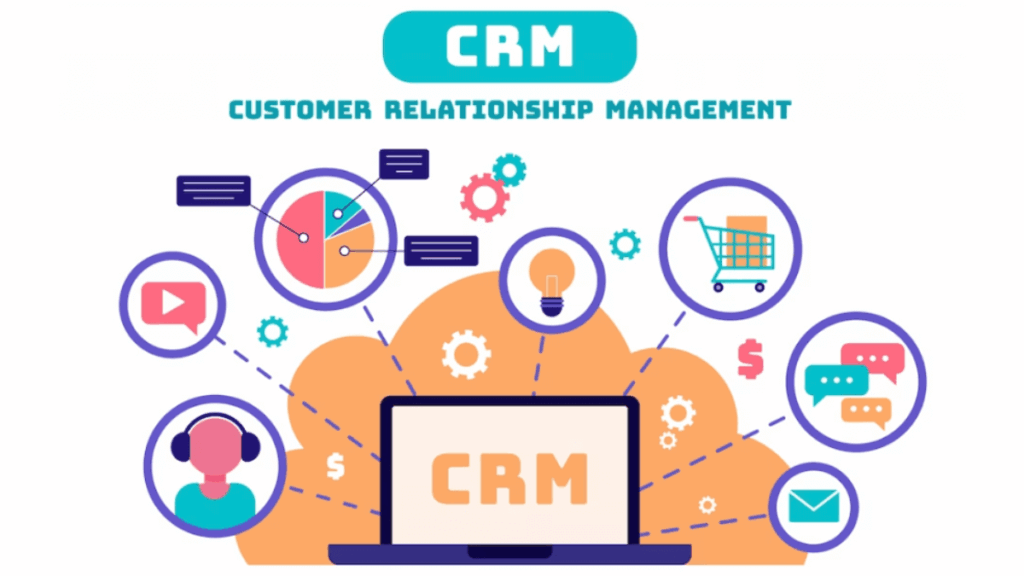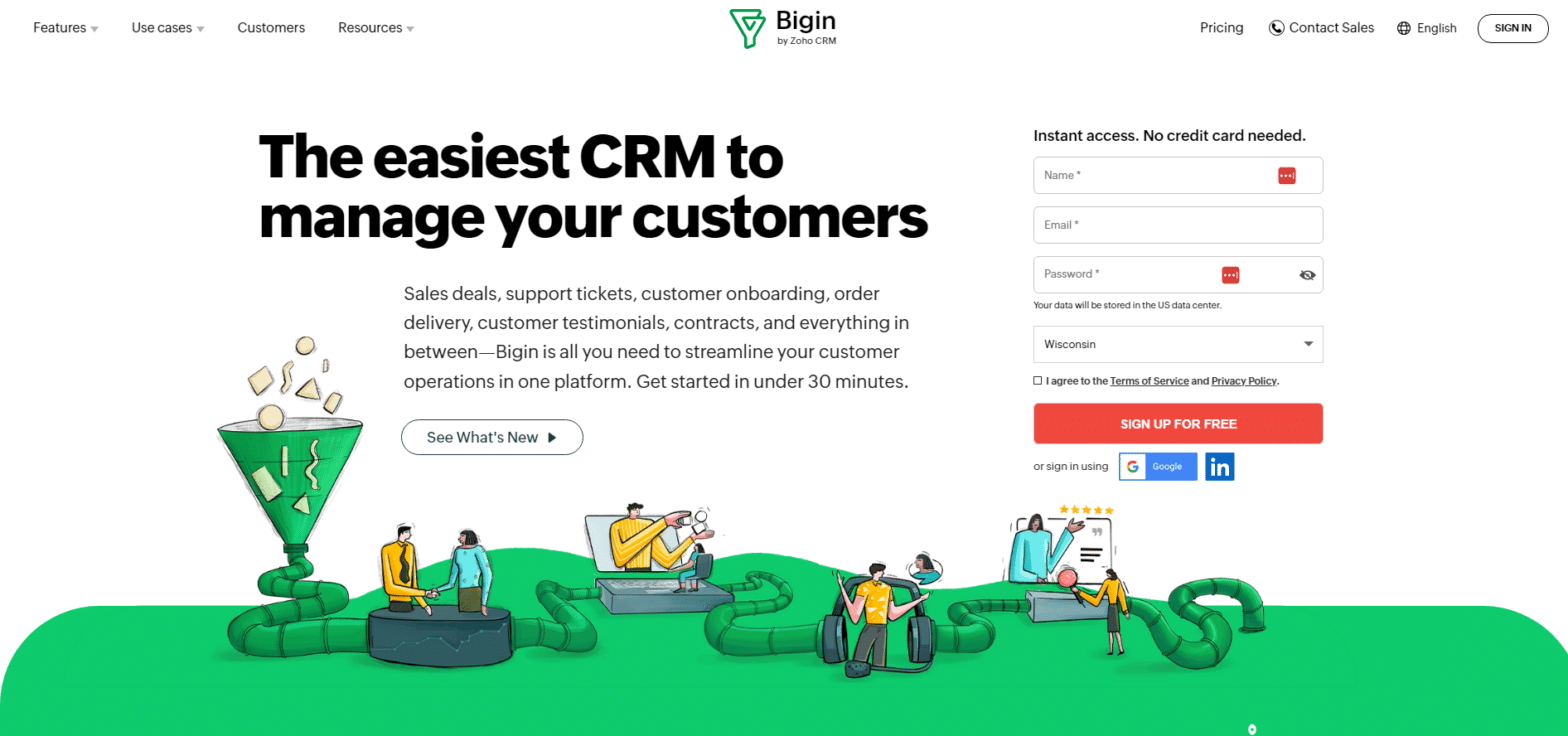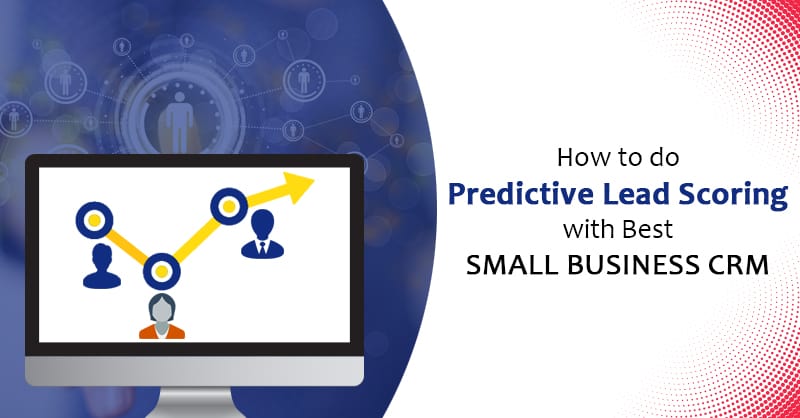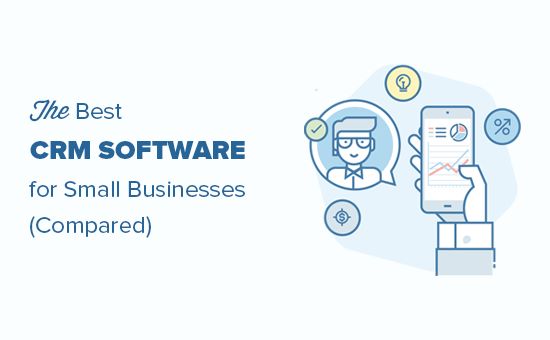
Introduction: Why Your Small Business Needs a CRM
Running a small business is a rollercoaster, isn’t it? You’re juggling a million things – from product development and marketing to sales and customer service. In the midst of all this, it’s easy for customer relationships to fall by the wayside. That’s where a Customer Relationship Management (CRM) system swoops in to save the day. But what exactly is a CRM, and why is it so crucial for your small business?
Simply put, a CRM is a software solution designed to manage and analyze customer interactions and data throughout the customer lifecycle. It helps you understand your customers better, personalize your interactions, and ultimately, boost your bottom line. Think of it as your central hub for everything customer-related: contact information, communication history, sales pipeline, and more.
In today’s competitive landscape, a CRM isn’t just a nice-to-have; it’s a necessity. It empowers you to:
- Improve Customer Relationships: Build stronger connections by remembering important details and personalizing your interactions.
- Boost Sales: Streamline your sales process, track leads effectively, and close more deals.
- Enhance Customer Service: Provide faster, more efficient support by having all customer information readily available.
- Increase Efficiency: Automate repetitive tasks and free up your time to focus on growing your business.
- Gain Valuable Insights: Analyze customer data to understand trends, identify opportunities, and make data-driven decisions.
This comprehensive guide will walk you through everything you need to know to set up a CRM for your small business, from choosing the right software to implementing best practices. Let’s get started!
Choosing the Right CRM for Your Small Business
The CRM market is vast, with a plethora of options available, each boasting its own set of features and capabilities. Selecting the right CRM can feel like navigating a maze, but don’t worry, we’ll break it down. The key is to find a system that aligns with your specific business needs, budget, and technical capabilities. Here’s a step-by-step approach to help you choose the perfect CRM:
1. Define Your Needs and Goals
Before you even start looking at software, take some time to understand your business needs. What are your primary goals for implementing a CRM? Are you looking to improve sales, enhance customer service, or streamline marketing efforts? Consider the following questions:
- What are your current pain points? What challenges are you facing in managing customer relationships?
- What are your key business processes? How do you currently manage leads, sales, and customer interactions?
- What features are essential? Do you need features like contact management, sales automation, email marketing integration, or reporting?
- What is your budget? CRM software can range in price from free to thousands of dollars per month.
- Who will be using the CRM? Consider the technical skills and experience of your team.
Answering these questions will help you create a clear picture of your requirements, making it easier to narrow down your options.
2. Research CRM Software Options
Once you have a clear understanding of your needs, it’s time to research the available CRM options. Here are some popular choices, each with its own strengths and weaknesses:
- HubSpot CRM: A popular choice for small businesses, HubSpot CRM offers a free version with robust features, including contact management, deal tracking, and email marketing tools. It’s user-friendly and integrates well with other HubSpot products.
- Zoho CRM: Zoho CRM is a comprehensive CRM solution with a wide range of features, including sales automation, marketing automation, and customer support tools. It’s a good option for businesses that need a fully integrated platform.
- Salesforce Sales Cloud: Salesforce is a leading CRM provider, offering a highly customizable platform with a vast array of features. However, it can be complex and expensive, making it more suitable for larger businesses.
- Pipedrive: Pipedrive is a sales-focused CRM designed to streamline the sales process. It’s known for its user-friendly interface and visual sales pipeline.
- Freshsales: Freshsales is a CRM that focuses on ease of use and affordability. It offers a range of features, including sales automation, email integration, and reporting.
- Less Annoying CRM: As the name suggests, Less Annoying CRM is designed to be simple and easy to use, making it a good option for small businesses that want a straightforward CRM solution.
When researching, consider factors like:
- Features: Does the CRM offer the features you need?
- Pricing: Does the pricing fit your budget?
- Ease of use: Is the platform user-friendly and easy to learn?
- Integrations: Does it integrate with your existing tools and systems?
- Scalability: Can the CRM grow with your business?
- Reviews and ratings: What do other users say about the software?
3. Evaluate and Compare
Create a shortlist of potential CRM solutions based on your research. Compare them side-by-side, focusing on the features, pricing, and integrations that are most important to you. Consider the following factors:
- Features: Does the CRM offer the features you need?
- Pricing: Does the pricing fit your budget?
- Ease of use: Is the platform user-friendly and easy to learn?
- Integrations: Does it integrate with your existing tools and systems?
- Scalability: Can the CRM grow with your business?
- Reviews and ratings: What do other users say about the software?
4. Take Advantage of Free Trials and Demos
Most CRM providers offer free trials or demos. This is an excellent opportunity to test the software and see if it’s a good fit for your business. During the trial, try out the key features and see how they work in practice. Ask questions and get hands-on experience with the platform. Pay attention to:
- User interface: Is the platform intuitive and easy to navigate?
- Performance: Does the software run smoothly?
- Customer support: Is the customer support responsive and helpful?
5. Make Your Decision
After evaluating your options, make a decision based on your needs, budget, and overall fit. Don’t be afraid to start with a simpler CRM and upgrade later as your business grows. The most important thing is to choose a CRM that you’ll actually use.
Setting Up Your CRM: A Step-by-Step Guide
Once you’ve chosen your CRM, it’s time to set it up. This process can vary depending on the software you choose, but the general steps are the same. Here’s a comprehensive guide to help you get started:
1. Create Your Account and Configure Basic Settings
The first step is to create an account and configure the basic settings. This typically involves providing your business information, setting up your company profile, and defining user roles and permissions. Make sure to:
- Enter accurate business information: This includes your company name, address, contact information, and logo.
- Set up user roles and permissions: Define the roles and permissions for each user to control access to sensitive data.
- Customize the dashboard: Personalize your dashboard to display the information that’s most important to you.
2. Import Your Data
The next step is to import your existing customer data into the CRM. This typically involves importing data from spreadsheets, email contacts, or other databases. Before importing, it’s crucial to clean and organize your data to ensure accuracy and avoid duplicates. Here’s how:
- Prepare your data: Organize your data into a spreadsheet or CSV file, ensuring that each column represents a specific field (e.g., first name, last name, email address).
- Clean your data: Remove any duplicates, correct errors, and standardize the formatting.
- Import your data: Follow the CRM’s instructions to import your data. Most CRMs offer import templates to guide you through the process.
- Map your fields: When importing, map your data fields to the corresponding fields in the CRM.
- Verify your data: After importing, review your data to ensure that it has been imported correctly.
3. Customize Your CRM
Most CRMs offer a high degree of customization. Take advantage of this to tailor the platform to your specific business needs. This may involve:
- Creating custom fields: Add custom fields to capture information that is not included in the standard fields.
- Customizing the sales pipeline: Configure your sales pipeline to match your sales process.
- Setting up workflows and automation: Automate repetitive tasks, such as sending follow-up emails or creating tasks.
- Integrating with other tools: Integrate your CRM with other tools, such as email marketing platforms, accounting software, and social media channels.
4. Train Your Team
Training your team is essential for the successful adoption of your CRM. Provide comprehensive training on how to use the platform, including its features, workflows, and best practices. Make sure to:
- Create training materials: Develop training materials, such as user manuals, video tutorials, and cheat sheets.
- Conduct training sessions: Conduct training sessions for your team, covering the key features and functionalities of the CRM.
- Provide ongoing support: Provide ongoing support and answer any questions your team may have.
- Encourage adoption: Encourage your team to use the CRM by highlighting its benefits and making it a central part of their daily workflow.
5. Test and Refine
After setting up your CRM, test it thoroughly to ensure that everything is working correctly. Identify any issues and make adjustments as needed. Continuously refine your CRM setup based on your team’s feedback and your business needs. This could include:
- Testing workflows and automation: Ensure that your workflows and automation are running smoothly.
- Reviewing reports and dashboards: Review your reports and dashboards to ensure that they are providing the insights you need.
- Gathering feedback from your team: Gather feedback from your team on their experience using the CRM.
- Making adjustments: Make adjustments to your CRM setup based on your team’s feedback and your business needs.
Implementing CRM Best Practices
Setting up a CRM is just the beginning. To get the most out of your system, it’s important to implement best practices that will help you maximize its effectiveness. Here are some key strategies:
1. Keep Your Data Clean and Up-to-Date
Data is the lifeblood of your CRM. Keeping your data clean and up-to-date is essential for accurate reporting, effective communication, and personalized interactions. Regularly review your data, remove duplicates, correct errors, and update outdated information. Consider the following:
- Implement data validation rules: Use data validation rules to prevent errors and ensure data accuracy.
- Set up data cleansing routines: Regularly clean your data to remove duplicates and correct errors.
- Encourage data entry best practices: Train your team on data entry best practices to ensure data accuracy.
- Review data regularly: Regularly review your data to identify and correct any inaccuracies.
2. Focus on Data Entry Discipline
Encourage your team to enter data consistently and accurately. This includes providing clear guidelines on how to enter data, using consistent formatting, and enforcing data entry standards. Poor data entry can lead to inaccurate reports, missed opportunities, and frustrated customers. Make sure to:
- Establish clear data entry guidelines: Provide clear guidelines on how to enter data, including the required fields and formatting.
- Train your team: Train your team on data entry best practices.
- Monitor data entry: Monitor data entry to identify any errors or inconsistencies.
- Provide feedback: Provide feedback to your team on their data entry performance.
3. Automate Tasks Where Possible
CRM systems offer powerful automation capabilities. Automate repetitive tasks, such as sending follow-up emails, creating tasks, and updating records, to save time and improve efficiency. Automation can also help you ensure that important tasks are not overlooked. Consider these options:
- Automate email marketing: Automate your email marketing campaigns to send targeted messages to your customers.
- Automate sales processes: Automate your sales processes, such as lead nurturing and deal tracking.
- Automate customer service tasks: Automate customer service tasks, such as sending automated responses to inquiries.
- Set up workflow rules: Set up workflow rules to automate tasks based on specific triggers.
4. Use CRM for Communication
Use your CRM as your central hub for all customer communication. This allows you to track all interactions, personalize your messages, and provide a consistent customer experience. Ensure all customer-facing teams are using the CRM to log and track all communications, including:
- Emails: Track all email communications with your customers.
- Phone calls: Log all phone calls and record notes about the conversations.
- Meetings: Schedule and track meetings with your customers.
- Social media interactions: Integrate your CRM with your social media channels to track interactions.
5. Analyze Data and Generate Reports
Regularly analyze your CRM data to gain insights into your customer behavior, sales performance, and marketing effectiveness. Generate reports to track key metrics, identify trends, and make data-driven decisions. This includes:
- Track sales performance: Track your sales performance, including leads, opportunities, and closed deals.
- Analyze customer behavior: Analyze customer behavior to understand their needs and preferences.
- Measure marketing effectiveness: Measure the effectiveness of your marketing campaigns.
- Generate custom reports: Generate custom reports to track the metrics that are most important to your business.
6. Integrate with Other Tools
Integrate your CRM with other tools and systems to streamline your workflows and improve efficiency. This can include email marketing platforms, accounting software, and social media channels. Integration helps you to:
- Automate data transfer: Automate the transfer of data between your CRM and other tools.
- Improve data accuracy: Improve data accuracy by eliminating manual data entry.
- Enhance collaboration: Enhance collaboration between your teams.
- Gain a holistic view of your customers: Gain a holistic view of your customers by combining data from multiple sources.
7. Provide Excellent Customer Service
Use your CRM to provide excellent customer service. This includes responding to customer inquiries promptly, resolving issues efficiently, and personalizing your interactions. A great CRM will help you:
- Track customer interactions: Track all customer interactions in one place.
- Personalize your interactions: Personalize your interactions by using customer data to tailor your communications.
- Resolve issues efficiently: Resolve customer issues efficiently by having all customer information readily available.
- Provide proactive support: Provide proactive support by anticipating customer needs.
8. Regularly Review and Update Your CRM
Your CRM is not a set-it-and-forget-it solution. Regularly review your CRM setup, identify areas for improvement, and make updates as needed. Your business needs and customer expectations will evolve over time, so you’ll need to adapt your CRM accordingly. This includes:
- Evaluate your CRM usage: Evaluate how your team is using the CRM.
- Gather feedback from your team: Gather feedback from your team on their experience using the CRM.
- Identify areas for improvement: Identify areas for improvement, such as workflows, automation, and reporting.
- Make updates and adjustments: Make updates and adjustments to your CRM setup based on your team’s feedback and your business needs.
Troubleshooting Common CRM Issues
Even with careful planning and implementation, you may encounter some common CRM issues. Here’s how to troubleshoot them:
1. Data Accuracy Issues
Problem: Inaccurate or incomplete data can lead to poor reporting, missed opportunities, and frustrated customers.
Solution:
- Implement data validation rules: Use data validation rules to prevent errors during data entry.
- Conduct regular data audits: Regularly review your data to identify and correct inaccuracies.
- Train your team: Train your team on data entry best practices.
- Use data enrichment tools: Use data enrichment tools to automatically update and enhance your data.
2. Low User Adoption
Problem: If your team doesn’t use the CRM, you won’t see the benefits. Low user adoption can be caused by various factors, including lack of training, a complex interface, or a perceived lack of value.
Solution:
- Provide comprehensive training: Provide comprehensive training on how to use the CRM.
- Make the CRM user-friendly: Choose a CRM that is easy to use and intuitive.
- Highlight the benefits: Highlight the benefits of using the CRM to your team.
- Get feedback from your team: Get feedback from your team on their experience using the CRM and make adjustments as needed.
- Lead by example: Encourage adoption by demonstrating how you use the CRM yourself.
3. Integration Problems
Problem: Integration problems can prevent data from flowing seamlessly between your CRM and other tools. This can lead to data silos and inefficiencies.
Solution:
- Choose a CRM with robust integrations: Choose a CRM that integrates well with your existing tools.
- Test integrations thoroughly: Test your integrations thoroughly to ensure that they are working correctly.
- Contact the CRM provider for support: Contact the CRM provider for support if you encounter any integration issues.
- Use a middleware solution: Consider using a middleware solution to connect your CRM with other tools.
4. Poor Reporting and Analytics
Problem: If you’re not getting the insights you need from your CRM, you can’t make data-driven decisions. This can be due to inaccurate data, a lack of reporting capabilities, or a failure to configure your reports correctly.
Solution:
- Ensure data accuracy: Ensure that your data is accurate and complete.
- Choose a CRM with strong reporting capabilities: Choose a CRM that offers the reporting capabilities you need.
- Customize your reports: Customize your reports to track the metrics that are most important to your business.
- Analyze your reports regularly: Analyze your reports regularly to identify trends and insights.
5. Slow Performance
Problem: Slow performance can frustrate users and make it difficult to get work done. This can be caused by a variety of factors, including a large amount of data, a slow internet connection, or a poorly optimized CRM configuration.
Solution:
- Optimize your data: Optimize your data by removing unnecessary data and archiving older data.
- Ensure a fast internet connection: Ensure that you have a fast and reliable internet connection.
- Contact the CRM provider for support: Contact the CRM provider for support if you are experiencing slow performance.
- Upgrade your CRM plan: Consider upgrading your CRM plan if you are experiencing performance issues.
Conclusion: Embrace the Power of CRM
Setting up a CRM for your small business is an investment in your future. It’s a commitment to building stronger customer relationships, streamlining your processes, and making data-driven decisions. By following this guide, you’ll be well on your way to implementing a successful CRM strategy that drives growth and helps you achieve your business goals.
Remember, the key to success is to choose the right CRM for your needs, implement best practices, and continuously refine your approach. With the right CRM in place, you’ll be able to transform your customer relationships and propel your small business to new heights. So, take the plunge, embrace the power of CRM, and watch your business thrive!


